Simple Steps to having Success with a New Garden
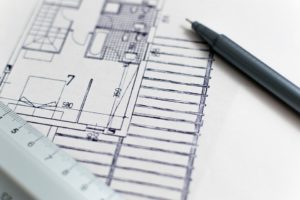
A garden has such transforming powers that it can bring a big change too and an area that needs a facelift. Starting a garden can be both an exciting and rewarding experience but at the same time, a new garden can offer many challenges that can leave the beginner gardener frustrated.
If this describes you then don’t give up, you have come to the right place to get the know-how on how to successfully install and maintain a garden that’s inviting with different shades of green and colorful flower bloom that is stunning and amazing. A garden oasis such as this is pleasing to the eyes as it gives a good feeling of nature at its best.
Start with a plan
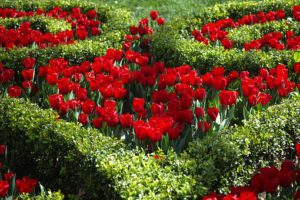
- Visualize or start with a plan
- The right location
- Clear away debris
- Soil testing
- Soil improvement
- Building your soil
- Installing your plants
- Maintaining your garden
Let’s get to work
1. Visualize or start with a plan
The first step in the right direction is to start with a plan, as the saying goes” he who fails to plan plan to fail” so it all starts with a plan. The right location is first on the list that we will be discussing a bit later, but once you locate where you want to install your garden go to that area and on a notepad begin to write as you visualize and arrange the layout in your mind. Putting down on paper what you visualize will make planning your garden a lot easier as you begin to see the start and the end of your desired goal.
2. The right location
This one can’t be stress enough and that’s the right location, just as plants differ in appearance so they differ when it comes to soil, watering, and lighting needs. Some plants love the full sunlight and then there are some that love partial or filtered sunlight and still, there are others that prefer the shade.
If installing your garden in an area that gets full sunlight then the plants that are chosen should be plants that will survive in this area. Now one important thing to remember is that in some garden setting parts of the area may get full sunlight while other parts may get partial sunlight and you may even have a part that is shaded because some structure or even a tall tree may be growing nearby providing shade.
This different level of lighting is known as micro-climate so know your garden plants light preference as stated and plant accordingly.
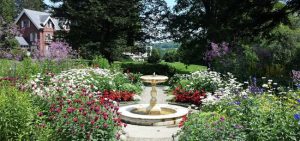
3. Clearing away debris
Now comes the part where you will have to use some muscles and that is clearing away debris. Ensure that you’re wearing the proper safety gear including a back brace and if you must get help then by all means do so.
Some debris may be salvaged for you to use as a part of your garden design, for example, if and an old tree log or a sizeable dead branch or even a few medium to large rocks can be saved and worked into the design then use them. This will give an all-natural look as if no human efforts were involved but designed by nature.
4. Soil testing
One of the keys to successful gardening depends on the soil, soil lays at the heart or roots of growing healthy plants. Garden soil ph plays an important part in growing and maintaining healthy plants, you can either do the soil ph test yourself by purchasing a soil ph kit from your garden center. Collect several samples from different parts of the area to be planted place the soil in a plastic bag and have it tested by a lab. For more on soil, ph clicks on the link that’s provided, soil ph.
5. Soil improvement
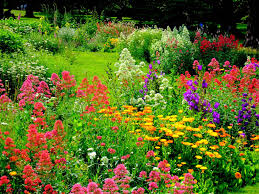
They are many soil types that different species of garden plants prefer, Know your soil type, for example, is the soil sandy, which means a soil that can’t retain water, or is the soil clay meaning that the soil has poor drainage or water takes longer to drain or is it a good garden soil that will hold the right amount of moisture but will allow excess water to drain on through.
If your soil needs improvements hopefully it doesn’t mix in organics or bringing in topsoil will go a long way in giving you the desired results and that’s growing a healthy garden.
6. Building your soil
Building your garden soil depending on the size of the area requires some muscles, get help if you need help. Tools such as shovels, a hard rake, a grass rake, and a wheelbarrow to carry around the soil are a must as you build your soil working it in with your native soil. If the project is really big then you may have to rent an excavator if it’s in your budget to do the job for you.
7. Installing your plants
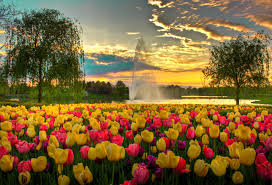
Now comes the plants, what’s a garden without plants right. Remember what we discussed earlier when it comes to choosing the right plant in step 2, choose plants base on their light requirements. Taller plants should be placed at the back while medium plants should be placed in the middle and the smaller plants should be placed in the front.
Now what you can do is break the rules a bit, for example, a few of the taller plants can be brought more forward along the sides and planted. One or two can be placed in the center, a few smaller plants can be planted on the sides and throughout the middle. Remember there are no set rules except for a few rules to follow and even then we can get away with breaking these rules to create uniqueness and interest. As you scroll to the bottom you will see a section on additional information that will also help in creating garden success.
8. Maintaining your garden
You have put in all that hard work besides a small fortune and now everything looks great as you stand back and give yourself a pat on the back. But in order to keep your garden beautiful and growing healthy, it must be maintained which will also require work on a monthly or weekly basis depending on how you plan to move forward. In the section on additional information, we will be covering some steps to take for garden success.
Additional information
1. When installing plants install at the right planting depth, only the root ball should be in the ground and covered with soil. Planting too deeply or incorrectly will cause the plant’s roots to suffocate causing injury.
2. Before installing plants know how large they will grow at maturity give them the right spacing, garden plants that are planted to close together until they touch or begin to rub may lead to disease because of poor air circulation so give plants their correct spacing for good airflow.
3. Group plants together that have the same water requirements, plants whose watering needs differ but are placed in the same bed will lead to issues causing plants to suffer so group plants that have the same water requirements.

4. Remember in our discussion we talked about plants that have the same lighting needs known as micro-climate. Group or mix plants that have the same light requirements.
5. Overwatering is common and unfortunately leads to root rot so know your plant watering needs.
6. Garden insect pests are present even in the best-kept garden. Whatever plants you’re planning on using find out about the host insects along with how to identify and bring control.
7. Fertilizers are plant nutrients and will do wonders providing your plants with the nutrients they need. Slow-release that is also known as control release and quick release or water-soluble can be used, each has its advantages and disadvantages.
If you’re growing an edible garden then my preference would be organic fertilizers because organics are all-natural. When using synthetic or man-made fertilizers such as slow and quick release read and follow the manufactures directions for best results.
8. Adding mulch is a great way to suppress weeds while bringing beauty to your garden. Mulches have other benefits that you can view here. Mulch benefits.
9. Weeds compete with garden plants for sunlight, water, and nutrients. Weeds also encourage disease and are a hiding place for many garden insect pests. The presence of weeds will also take away the beauty of a good garden design so stay on top of your wedding. For more on weeds refer to the category section.
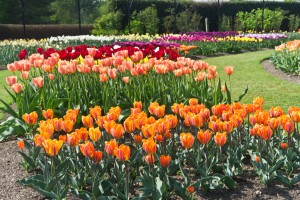
Advantages of installing and maintaining a garden
1. A garden that’s nicely maintained will increase your property’s value.
2. Working in your garden will expose you to the sunlight that will provide vitamin D that’s so important to our health.
3. Working in your garden will provide mental and physical exercise.
4. Working in the garden with your family will increase your family bond.
5. Depending on the type of garden you’re growing such as an edible garden can save you money by growing your own foods.
6. Construction of a garden will help to bring balance to our ecosystem. For example, providing a home and food source of wildlife as well as beneficial insects.
7. If you are growing an edible garden you can control the way your foods (growing healthy foods) are grown.
8 Helps you to sleep better because of the physical activity.
9. Will give a sense of pride standing back and looking at your hard work paying off.
10. Working on the great outdoors in your home garden is a great way to relieve stress.
The final word on how to install a new garden
Constructing and maintaining a garden can be so rewarding as you connect with nature outdoors. Gardening can provide hours of activity as you work with your family in and outside the environment strengthing your bond.
Starting a new garden doesn’t have to be stressful once you have the know-how that’s all it takes and you will be on your way by having a stunning and transformed surrounding that is so inviting which seems to say home sweet home so let’s get started because I can hear nature calling your name, can you?
About the author
Norman loves being in the garden, both at home and for his job....
he is 'Natures Little helper' being outdoors, growing his vegetables and flowers from an early age.
Now having spent over 22 years in the profession he want to give some of his knowledge to others...
his vast array of hints and tips you will find scattered over this site will help you no end growing plants in your garden.

I have always wanted to start a new garden as my old one was washed away in a land slide, but I have found it hard to do so as my old garden was given to me as a gift so I knew started it from scratch…I have taken a lot of training and read ebooks but I haven’t gotten what would help me start up, but free reading this I think I am good to go.
Hello, Sophia so happy to meet you and I am so sorry to hear about your garden. Having a garden can be so amazing as it offers so many benefits. I am so happy to help, wishing you all the best of success beautiful lady. Have a good day.
Good Morning,
I myself would be interested in learning more about Gardening/green housing
Everyone like a site
good site layout –good information– I’m new to all this Affiliate Marketing stuff
I’m here to Learn–and Not only here to help myself to Prosper but to Help others do the same you have spent a lot of hard working creating your website Keep up the Hard work Please feel free to reach out if i can help in anyway
Thanks
Richard
Hello, so happy to meet you, and thanks a million for those kind words. The world of gardening is truly amazing and offers so much. Wishing you the best of success as you move forward, have a good day.
What a wonderful and descriptive piece! I have been thinking of starting my own mini garden for the past two months but I never have the motivation to do so. After reading this post I got some insights of things that I wasn’t aware of that I needed to know. I live in a tropical island so it’s sunny and hot all year long. I’m aiming for plants that can be able to resist this type of weather. Any recommendations?
Thanks so much for those kind words and I am so happy to help. I live on a tropical island also which I think is so amazing because of the beautiful beaches. There are so many plants that can be used from hibiscus, aster, hoster, gingers, bromeliads which is a family of some 2,700 species, copper leaf, and so on. These are just a few of the many plants that will grow well in your tropical garden. I hope this helps.
This is a great post on a subject that I am increasingly becoming more interested in! I have been able to recently grow a small vegetable pot garden and the experience has been so rewarding. I know that I still have a lot to learn and this post is going a long way towards helping me get more educated. I love how you break down the plan. Sometimes I have difficulty getting organized. This is a big help, so thank you!
Congratulations on your success with growing your vegetable. I am so happy to help and wishing you garden success as you move forward with your plans.
Gardening is definitely a way of life that many people choose, i mean who doesn’t like to be in nature all the time and you can actually make money out of it at the end of the day if your smart enough.
I myself live in on a farm so farming and gardening is my life. However in those steps you mentioned there’s one thing i struggle to get right and that’s soil improvement. we have a hard clay like soil that goes deep into the earth. so my question to you is how do I fix this problem ? once i have that problem solved i can start to buy plants for my garden which I’m very exited to do.
Also i worry that if i put fertilizers down and heavy rains come they much pour into our river and create a nutrient over load causing eutrophication, will this be a problem?
Thanks I look forward to your reply !
Hello, working in nature and with nature is so amazing and rewarding. So sorry to hear of the challenges you are having with your clay soils, one suggestion is to use sand because is porous and well-drained but a more effective way would be to add organic matter such as leave mold, sawdust, barks, compost, manures, etc…
You should not let the heavy rains stop you, some rain will do good for your garden. Just follow the manufactures direction on the label for best results or grow your garden natural by adding compost or organics this way you don’t have to concern yourself of contaminating your river.
Another suggestion I want to make that can save you money, instead of trying to change your clay soil structure way not install plants that can grow in these soil type, there are so many such as asters, blazing star, coneflower, daylily, butterfly weed, hosta, etc… these are just a few of many plants that will tolerate clay soils. I hope this helps.